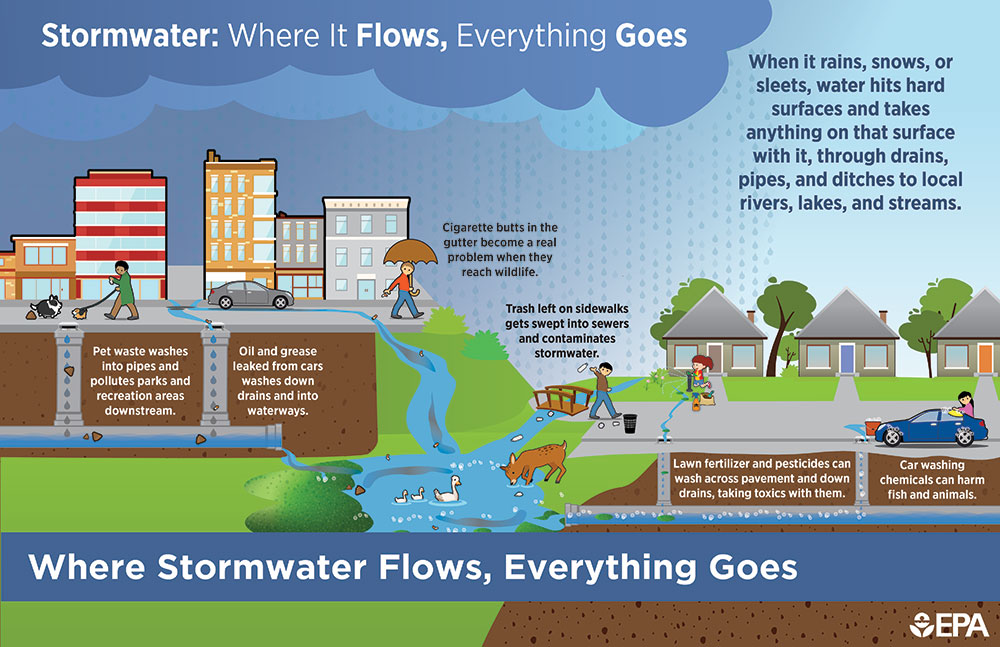What is storm water runoff?
Stormwater runoff occurs when precipitation from rain or snowmelt flows over the ground. Hard surfaces like driveways, sidewalks, and streets prevent storm water from naturally soaking into the ground. Instead, rain runs off and flows into a storm drain or ditch, which can flow into the nearest water body.
Why is stormwater runoff a problem?
Stormwater can pick up debris, chemicals, dirt, and other pollutants and flow into a storm drain or ditch or directly to a lake, stream, river, wetland, or aquatic resource. Storm drain systems are separate from wastewater systems, so anything that enters a storm sewer system can be discharged untreated into the local waterbodies we use for recreating and providing drinking water.

What are the effects of pollution?
Polluted stormwater runoff can have adverse effects on plants, fish, animals, and people.
- Sediment can cloud the water and make it difficult or impossible for aquatic plants to grow. Sediment also can destroy aquatic habitats and kill fish.
- Excess nutrients can cause algae blooms. When algae die, they sink to the bottom and decompose in a process that removes oxygen from the water. Fish and other aquatic organisms can't exist in water with low dissolved oxygen levels.
- Bacteria and other pathogens can wash into swimming areas and create health hazards.
- Debris - plastic bags, six-pack rings, bottles, and cigarette butts - washed into waterbodies can choke, suffocate, or disable aquatic life like ducks, fish, turtles, and birds.
- Household hazardous wastes like insecticides, pesticides, paint, solvents, used motor oil, and other auto fluids can poison aquatic life. Land animals and people can become sick or die from eating diseased fish and shellfish or ingesting polluted water.
- Polluted stormwater can affect drinking water sources. This, in turn, can affect human health and increase drinking water treatment costs.
